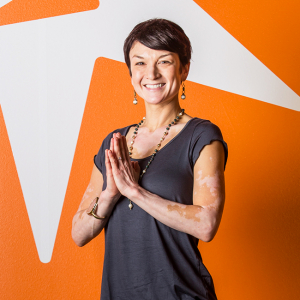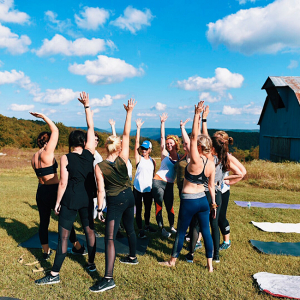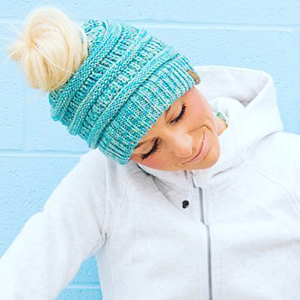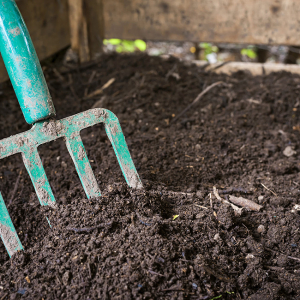The Oils Have It

Essential oils are nothing new. The use of these plant extracts date back to ancient Egypt, where the aromatic extracts were used for everything from beauty and culinary needs to spiritual and physical wellbeing.
Today, essential oils are undergoing a renaissance of sorts. Celebrities, doctors, yoga instructors all tout the miraculous effects of these oils, claiming they’ve found Mother Nature’s little superheroes. We chatted with two essential oil enthusiasts to help you navigate the world of oils and find the right ones for you.
Ways They Help
Dr. Kaitlin Parker with Thrive Chiropractic was first introduced to essential oils when a colleague recommended she use peppermint oil with her patients to help with congestion relief. Now, she uses essential oils in her practice with patients daily.
“After seeing some success with this firsthand, I began researching them further,” she said. “We mainly use certified therapeutic-grade oils in our office for pain relief, but we also diffuse them to help purify the air and create a relaxing atmosphere.”
Bethany Siems, an avid CrossFit athlete, discovered essential oils affected her family by regulating moods, reducing stress, easing seasonal discomfort and supporting immune systems.
“Once I began to see the results of better sleep, more energy and even better clarity — which as a mom of two can really be hard to come by — I decided to take further action to rid our home of synthetic and chemical-based products,” Siems said. “Essential oils have now become our in-home toolbox for optimal health and vitality.”
How to Use Them
Essential oils can be used in a variety of ways, from application directly onto the skin to using an oil diffuser. Sprinkling cinnamon on oatmeal or adding fresh basil to a recipe is another way to consume aromatic essential oil compounds. Other oils like lavender and peppermint help just by smelling them. Adding a few drops of these oils into your palm and then cupping your hand around your nose for a few deep breaths can help with relaxation and stress relief.
Dr. Parker’s patients use essential oils for anti-bacterial and viral effects to help fight off illnesses such as colds and ear infections. Some of the more commonly used oils include peppermint and eucalyptus for congestion, oregano and melaleuca for infections and lavender for skin irritations and cuts.
Siems has been maintaining a steady CrossFit regimen for the past six years. Throughout that time, she’s used essential oils to keep her body at peak performance and help with the inevitable aches and pains from a hard workout.
To promote the body’s healthy circulation and antioxidant defense, Siems uses a blend of wild orange peel, clove bud, cinnamon leaf, cinnamon bark, eucalyptus leaf and rosemary leaf and flower essential oils. She places this oil topically on the bottoms of her feet and down her spine each day, and uses natural sanitizing mist after using equipment at the gym.
She also uses a balm with a mixture of oils like ylang ylang, peppermint, eucalyptus and blue chamomile as a “go-to for joint and muscle discomfort and recovery post-workout.”
What to Look For
While essential oils may be everywhere, they are not all created equal. Both Siems and Dr. Parker stress the importance of buying high-quality essential oils, not cheap, store-brand options.
“The quality of essential oils can vary widely, and currently there is not a regulatory body to oversee best practices on the distillation and processing of essential oils,” Siems said. “With the recent retail emergence and popularity of essential oils, it’s vital that you research and choose essential oils that are of the purest quality.
“Companies can make claims of 100 percent pure therapeutic-grade essential oils, but when you take a deeper look, [they] are layered with synthetic fillers and adulterated additives, so do your research!”
“It’s important ... because not all essential oils can be put on the skin or ingested, and it is a good idea to dilute some of them with a carrier oil before putting them on kiddos,” Dr. Parker said.
Take This for That:
A quick guide to essential oils and their uses
Problem: Headache
Solution: Peppermint

How it works: Peppermint contains a natural anesthetic called menthol that dulls pain receptors. Peppermint oil can cause irritation if applied directly to the skin, so dilute it first. Add two drops to one teaspoon of a carrier oil (an unscented base oil, such as sweet almond or coconut oil), then massage into skin on temples and forehead. Bonus: Peppermint oil is also good relief from sunburns.
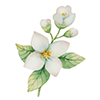
Problem: Feeling down
Solution: Jasmine
How it works: Research suggests that jasmine oil may act as a natural antidepressant when massaged into the skin. Add five drops to a few ounces of a carrier oil, then rub into shoulders.
Problem: Congestion
Solution: Eucalyptus

How it works: Eucalyptus oil acts as a natural expectorant, which helps clear mucus from air passages. To alleviate congestion, boil one quart of water, let it cool slightly, then pour it into a bowl. Add four drops of oil, drape a towel over your head and lean over the steam, inhaling for 10-15 minutes.
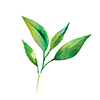
Problem: Acne
Solution: Tea tree
How it works: It’s no secret that tea tree oil helps clear up breakouts, but it’s the oil’s antimicrobial properties that are responsible for clear skin. Use a cotton ball to apply tea tree oil directly to a pimple and leave overnight. By morning the pimple should be smaller and the redness should have subsided.
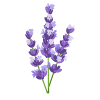
Problem: Stress
Solution: Lavender
How it works: The scent of lavender is said to calm the nervous system. Try adding four to six drops to a warm bath or mixing the oil with water in a spray bottle to mist into the air.



